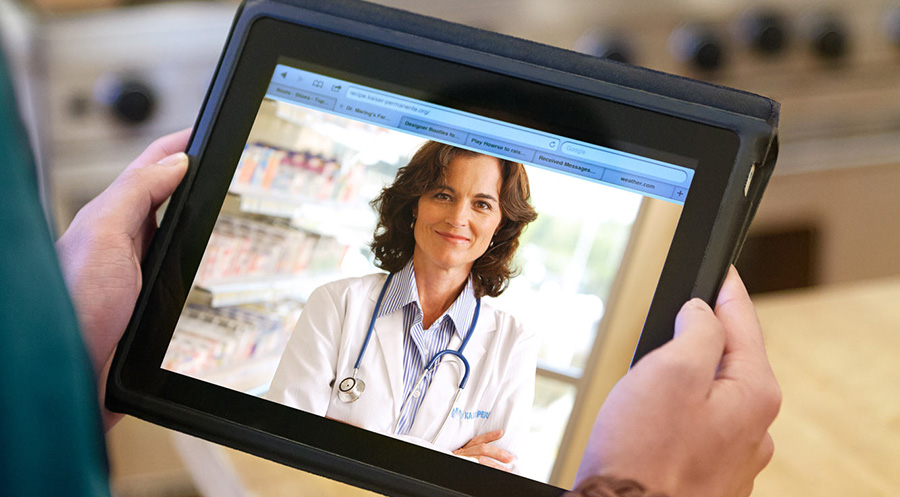In a transition that began prior to the pandemic but has accelerated in the last two years, health systems such as Mayo Clinic, Intermountain Health and Kaiser Permanente have ramped up hospital-at-home programs.
Kaiser Permanente, for its part, launched the Kaiser Permanente at Home initiative in many of its Northern California and Northwest hospitals in April of 2020 as the pandemic began sweeping the globe.
“We had been planning to launch something a year before the pandemic came but we had stalled around some regulatory barriers, specifically the lack of regulatory infrastructure for a program like this and how it fits within the insurance arm of our health system,” says Mary Giswold, MD, Northwest Permanente Chief Operating Officer, who oversees KP at Home in Oregon and Southern Washington.
Health at home models will be among the topics discussed at the 2022 Health Evolution Summit. Learn more.
Then in the fall of 2020, CMS announced its Hospital Without Walls initiative to temporarily waive the requirement that inpatient care would have to be done within a hospital. The waiver brought some clarity to the program, which was being used as part of KP’s surge strategy within the Portland, Oregon area. Thanks partly to CMS’s waiver, the program has admitted over 1,100 patients in under two years of operation treating a variety of disease conditions including heart failure, pneumonia, COVID-19, and post-surgical care.
“We are currently holding an average daily census of 15 patients, so we essentially added a hospital floor to our inpatient capacity. We have learned a tremendous amount in the two years we’ve run this program,” says Giswold.
Looking toward the future, Kaiser Permanente is pushing the industry to accept hospital-at-home initiatives and integrate them into care models. The CMS waiver will expire when the public health emergency ends, which likely could put these hospital-at-home programs in danger without the promise of reimbursement. Kaiser joined with Mayo and other organizations to form the Advanced Care at Home Coalition with the goal of creating a regulatory framework around the hospital-at-home model. They’re also advocating for CMS Innovation Center to create a safe, quality-based model that can be replicable across the industry.
What’s needed next? Resources and regulations
When it comes to scaling up its hospital-at-home initiative, Kaiser Permanente faced a number of familiar challenges to those organizations that have traveled down the same path. First and foremost, Giswold says the program requires a considerable number of resources.
“It takes a village to stand up one of these initiatives: compliance, legal, quality, and operations leaders all working together to make sure you’re standing up a program that is safe and that patients will feel comfortable in. A lot of smaller organizations may not have the resources to do that,” Giswold says. “That’s where the coalition comes into play. We have an opportunity to help make this possible for other organizations.”
With an eye toward patient safety and quality, Kaiser underwent hundreds of simulations before ever going live with the hospital-at-home program. She says Kaiser partnered with Medically Home, which supports the supply chain resources needed for hospital-at-home. The platform connects patients with a hospitalist within Kaiser and a nursing command center in Boston. Oregon laws allow for paramedics to come into the home and provide any hands-on direct care that’s needed.
“We had to build this and write the playbook because it hadn’t been done on this kind of scale. While an average daily census of 15 seems small, it’s actually a lot of patients. We’re admitting, at times, almost one hundred patients per month into the program,” Giswold says.
What’s even more challenging and thus has made federal regulatory action necessary, she says, is the fact that states have a patchwork approach to compliance. She says between the infrastructure needed and the regulatory uncertainty, there won’t be a lot of health systems jumping feet first into the hospital-at-home space.
Earning buy in
Giswold says that organizations starting a hospital-at-home program should understand that change management is a critical element and it’s not just about convincing patients to buy into this program, clinicians and other stakeholders must be on board as well.
“We were comfortable in virtual care before the pandemic began but we hadn’t been doing it in inpatient care. There is change management with the patient’s care team making sure they feel the program is safe and will provide the same high-quality care they would have received in the hospital,” Giswold says. “It took a long time for our physicians to trust and believe that this was going to be OK, and our patients would be safe.”
KP tracked the quality metrics on the initial crop of patients within the program extra carefully and underwent intense process improvement. There were a lot of case reviews and two-way communication with clinicians as well. As physicians began to experience the program’s benefits, they started to buy in, Giswold says. What helped push the program into wider utilization, she notes, is the acceptance from 80 key hospitalists across the organization.
As the industry deals with the lingering challenges of the pandemic while facing a talent shortage, investment into these programs will be necessary, Giswold says. In that regard, a regulatory framework and playbook is necessary.
“We need a framework about how to do this so it doesn’t take people so long to stand up these programs,” Giswold says. “2022 is the time for CMS to do this because when the public health emergency ends, we’re there and ready to help keep it moving. We won’t lose what we’ve learned.”










